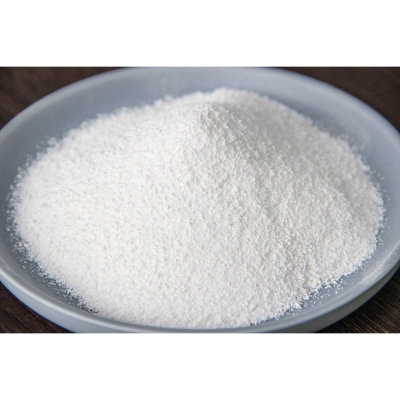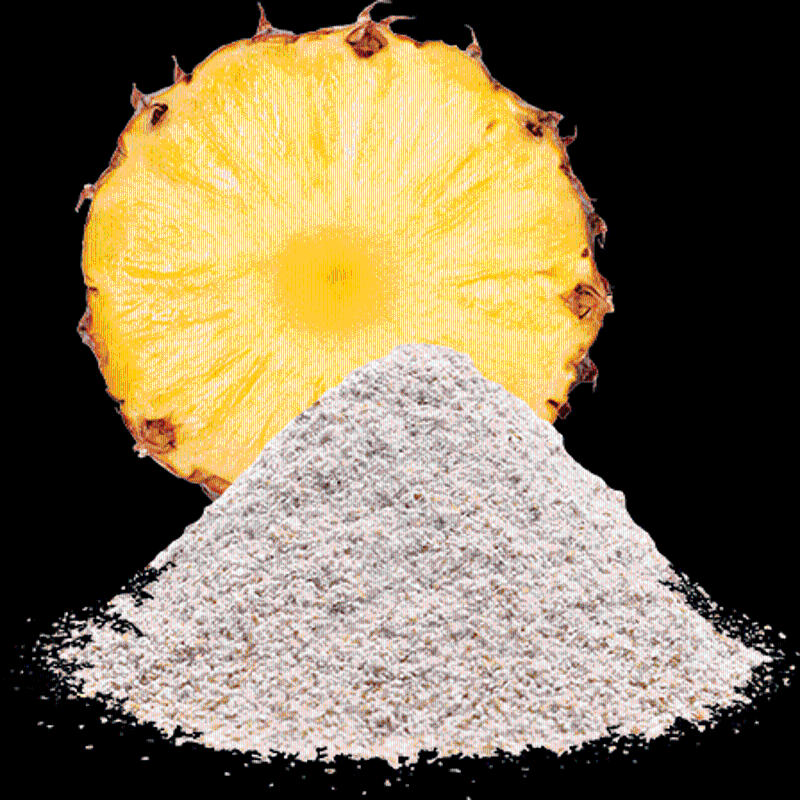Lysozyme can replace antibiotic feed additives
-
Last Update: 2020-07-02
-
Source: Internet
-
Author: User
Search more information of high quality chemicals, good prices and reliable suppliers, visit
www.echemi.com
The characteristics ofzPF1The pure lysozyme is white or micro-white crystalline or amorphous powder, soluble in water, insoluble in acetone, etherzPF
2The suitable temperature of lysozyme action is 35 degrees C to 50 degrees C, the most suitable temperature is 37 degrees C, the lysozyme is suitable for pH5.3 to 7.4, the most suitable for pH6.8, its water solution is stable in pH3 to 11, not easy to be destroyed by stomach acidzPF
3Lysozyme will not be inactivated due to the treatment of organic solvents, when transferred to aqueous solution, the vitality of lysozyme can be fully restoredzPF
4Lysozyme has strong thermal stability, is the most known heat-resistant enzyme, in pH4 to 8, 1 minute of treatment of enzyme activity at 100 degrees C is still maintained at more than 90%At the same time, lysozyme can be frozen or dried, and the vitality is stable zPF
5 The antibacterial spectrum of lysozyme is wide, not only the effect of G-bacteria is outstanding, but also has a good anti-killing effect on some G-bacteria, especially on the drug-resistant bacteria effect is more obvious zPF
6 Lysozyme is a natural protein, non-toxic, harmless, non-residual, non-resistant, high biosecurity, in line with green, safe, healthy, environmental protection requirements zPF
7 Lysozyme and antibiotic synthase can increase efficiency by 2 times to 10 times, reduce the amount of antibiotics, effectively control the drug residue the main function of zPF lysozyme zPF antibacterial anti-inflammatory lysozyme, also known as cytosylyse or N-acetyl cell wall polysaccharide hydrolysis, is a hydrolysis pathogenic bacteria in the sticky polysaccharide alkaline enzyme Mainly by destroying the beta-1,4 glycoside bonds between N-acetyl cytonic acid and N-acetaminophen glucan in the cell wall, so that the cell wall insoluble sticky polysaccharides break down into soluble glycopeptides, which causes the g-bacterial cell wall to rupture under osmosis pressure, the contents overflow and cause the bacteria to die; In the environment, due to the involvement of secretion type lgA, supplement, etc., lysozyme can also hydrolyz some G-bacteria; Therefore, lysozyme can achieve the anti-bacterial anti-inflammatory, disease-strong body, promote growth purposes zPF
Antiviral lysozyme and negatively charged viral proteins act directly to form compound salts with DNA, RNA, de-secondary proteins, so that the virus inactivates, can prevent the reproduction of influenza and adenoviruses, and prevent herpes virus infection, combined with bacterial polysaccharides, reduce endotoxin effect, especially effective in winter and spring vulnerable infectious diseases Australian scientists have found that respiratory infections caused by influenza A virus are related to lysozymes, which cause damage to bronchial cell function, reduced lysozyme secretion, and reduced antibacterial activity, leading to respiratory pathogen infections zPF
Enhanced immunity lysozyme as one of the nonspecific immune factors of the ostonic body, participating in a variety of autologous immune reactions, in the normal muscle defense function and non-specific immunity, has the important role of maintaining the physiological balance of the body: can strengthen the resistance of serum sterilization protein, gamma-globulin and other internal defense factors to infection; Lysozyme itself has a T-cell epitope, can induce type 2 (Th2)T-assisted cell reaction, oral lysozyme can induce mice to produce a full-body Th1 and Th2 immune response, enhance 2 x 4 times immune function; zPF
Repairing trauma tissue lysozyme can improve local tissue blood circulation disorders, break down pus, repair trauma tissue, and enhance local defense functions Therefore, as a new functional additive for the prevention and control of diseases in poultry and livestock, lysobacteria can replace antibiotic feed additives, and its unique antibacterial anti-viral and improve the efficacy of animal immunity is ideal for future animal health needs zPF
The characteristics of zPF 1 The pure lysozyme is white or micro-white crystalline or amorphous powder, soluble in water, insoluble in acetone, ether zPF
2 The suitable temperature of lysozyme action is 35 degrees C to 50 degrees C, the most suitable temperature is 37 degrees C, the lysozyme is suitable for pH5.3 to 7.4, the most suitable for pH6.8, its water solution is stable in pH3 to 11, not easy to be destroyed by stomach acid zPF
3 Lysozyme will not be inactivated due to the treatment of organic solvents, when transferred to aqueous solution, the vitality of lysozyme can be fully restored zPF
4 Lysozyme has strong thermal stability, is the most known heat-resistant enzyme, in pH4 to 8, 1 minute of treatment of enzyme activity at 100 degrees C is still maintained at more than 90% At the same time, lysozyme can be frozen or dried, and the vitality is stable zPF
5 The antibacterial spectrum of lysozyme is wide, not only the effect of G-bacteria is outstanding, but also has a good anti-killing effect on some G-bacteria, especially on the drug-resistant bacteria effect is more obvious zPF
6 Lysozyme is a natural protein, non-toxic, harmless, non-residual, non-resistant, high biosecurity, in line with green, safe, healthy, environmental protection requirements zPF
7 Lysozyme and antibiotic synthase can increase efficiency by 2 times to 10 times, reduce the amount of antibiotics, effectively control the drug residue the main function of zPF lysozyme zPF antibacterial anti-inflammatory lysozyme, also known as cytosylyse or N-acetyl cell wall polysaccharide hydrolysis, is a hydrolysis pathogenic bacteria in the sticky polysaccharide alkaline enzyme Mainly by destroying the beta-1,4 glycoside bonds between N-acetyl cytonic acid and N-acetaminophen glucan in the cell wall, so that the cell wall insoluble sticky polysaccharides break down into soluble glycopeptides, which causes the g-bacterial cell wall to rupture under osmosis pressure, the contents overflow and cause the bacteria to die; In the environment, due to the involvement of secretion type lgA, supplement, etc., lysozyme can also hydrolyz some G-bacteria; Therefore, lysozyme can achieve the anti-bacterial anti-inflammatory, disease-strong body, promote growth purposes zPF
Antiviral lysozyme and negatively charged viral proteins act directly to form compound salts with DNA, RNA, de-secondary proteins, so that the virus inactivates, can prevent the reproduction of influenza and adenoviruses, and prevent herpes virus infection, combined with bacterial polysaccharides, reduce endotoxin effect, especially effective in winter and spring vulnerable infectious diseases Australian scientists have found that respiratory infections caused by influenza A virus are related to lysozymes, which cause damage to bronchial cell function, reduced lysozyme secretion, and reduced antibacterial activity, leading to respiratory pathogen infections zPF
Enhanced immunity lysozyme as one of the nonspecific immune factors of the ostonic body, participating in a variety of autologous immune reactions, in the normal muscle defense function and non-specific immunity, has the important role of maintaining the physiological balance of the body: can strengthen the resistance of serum sterilization protein, gamma-globulin and other internal defense factors to infection; Lysozyme itself has a T-cell epitope, can induce type 2 (Th2)T-assisted cell reaction, oral lysozyme can induce mice to produce a full-body Th1 and Th2 immune response, enhance 2 x 4 times immune function; zPF
Repairing trauma tissue lysozyme can improve local tissue blood circulation disorders, break down pus, repair trauma tissue, and enhance local defense functions Therefore, as a new functional additive for the prevention and control of diseases in poultry and livestock, lysobacteria can replace antibiotic feed additives, and its unique antibacterial anti-viral and improve the efficacy of animal immunity is ideal for future animal health needs zPF (
name )
This article is an English version of an article which is originally in the Chinese language on echemi.com and is provided for information purposes only.
This website makes no representation or warranty of any kind, either expressed or implied, as to the accuracy, completeness ownership or reliability of
the article or any translations thereof. If you have any concerns or complaints relating to the article, please send an email, providing a detailed
description of the concern or complaint, to
service@echemi.com. A staff member will contact you within 5 working days. Once verified, infringing content
will be removed immediately.







